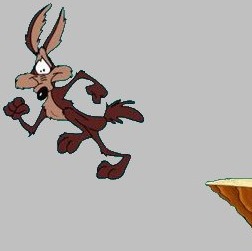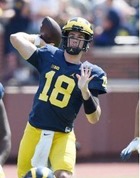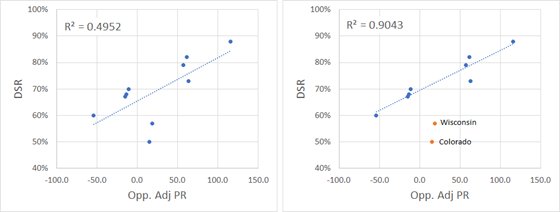[Ed-S: Bumped from diaries]
Well there's only two kinds of men: the one you love; the one you wish for. Try not to be deluded by that sweet and dreamy beginning. He will fool you. He will screw you.
-2 Kinds of Men, Marta Ren & The Groovelvets
------------------------
 Preach Marta, preach. It doesn’t take much bourbon—relatively speaking, of course—to understand this lyric. See, Marta understands that ain’t no way that we can actually be happy. We must either lower our standards or move on to the next spin of a janky assed roulette wheel.
Preach Marta, preach. It doesn’t take much bourbon—relatively speaking, of course—to understand this lyric. See, Marta understands that ain’t no way that we can actually be happy. We must either lower our standards or move on to the next spin of a janky assed roulette wheel.
Yeah he’s got a good heart and he’s trying real hard to bring home those dubyas and rings we both so desperately want. But, even if it happens, who knows if he’ll even be there next week? Dude is just going to move on up and fail at baseball or marry some skinny chic strutting on a runway somewhere. If you don’t love the one you have, then you’re wishing for the one you want. If you actually do love the one you have, then don’t get your hopes up that it will last. There’s only two kinds of men and both let you down. Thus sayeth the gospel of Marta Ren & The Groovelvets.
Don't take me and Marta’s word for it:
Speight was lethal, and terrible, and seemed to have little in between. He was very good for ten throws against Iowa and then fell off a cliff, and that was a microcosm of his play and the season. –mgoblog
In fairness to Wilton and QBs everywhere though, this lyric isn't fair. Football fans are impossible to appease. The best evaluation systems not only use absolute scales, but they also use relative scales and provide sufficient space to consider context. Most football fans inherently understand that putting up big numbers against a weak team must be taken with a grain of salt. The problem often is that a commensurate grain of salt isn't usually given to small numbers against strong teams. The comment often is: but what did you do against so and so? This assessment is almost always absolute. And context? Please, if Herbstreit doesn’t talk about it on Gameday then it doesn’t matter.
Ok, Dear. Whatever you say.
[Hit THE JUMP right now or I swear I'll bump a Draftageddon over it]
------------------------
Absolute Gravity
 In the comments section of last year’s QB round up I said the following in regards to the final 2017 passer rating for Michigan’s QB: “I'm going 140 based on the outside weapons, respectable running game, and play calling.” Also Harbaugh. In fact, Speight finished with an overall rating of 139.8. Yet, in retrospect, that feels like a let down. The reason is that Speight was bonkers (even when he was disappointing) before the wheels came off at Iowa (i.e: when he started playing good teams.). It felt like a let down because it was in fact a let down. We want consistency with neither ebbs nor flows. We want a fantasy.
In the comments section of last year’s QB round up I said the following in regards to the final 2017 passer rating for Michigan’s QB: “I'm going 140 based on the outside weapons, respectable running game, and play calling.” Also Harbaugh. In fact, Speight finished with an overall rating of 139.8. Yet, in retrospect, that feels like a let down. The reason is that Speight was bonkers (even when he was disappointing) before the wheels came off at Iowa (i.e: when he started playing good teams.). It felt like a let down because it was in fact a let down. We want consistency with neither ebbs nor flows. We want a fantasy.
| Season Split | Cmp | Att | Yds | TD | Int | PRat |
| OOC | 51 | 80 | 686 | 8 | 1 | 166.3 |
| B1G Pre Iowa | 98 | 151 | 1367 | 7 | 2 | 153.6 |
| All Pre Iowa | 149 | 231 | 2053 | 15 | 3 | 158.0 |
| Iowa, OSU, FSU | 55 | 100 | 485 | 3 | 4 | 97.6 |
| ALL | 204 | 331 | 2538 | 18 | 7 | 139.8 |
This whole section can be summed up thusly: we can’t be happy with Speight until beat beats OSU [/ducks]. Though I hate the concept, its hard to argue against it. There are no points for second best; every player worth their salt will trade stats for wins. Still, I say hogwash—context matters. Not enough to change the result but it matters.
------------------------
Grading on a Split Curve
Performing poorly when everyone else performs terribly bodes well for future performances. Of course, if everyone else isn't that good to begin with then maybe you do suck after all. The idea here is that you have to look at all the babies and their messy bibs before you start deciding what to keep and what to throw away. Let’s face it folks, some babies are in fact ugly.
The next table examines Speight’s individual performances against the teams he faced relative to how other passing attacks fared. Here’s the key for the column headings:
 Pass Def S&P+: Opponent’s year end Defensive Passing S&P+ according to Football Outsiders. The average S&P+ rating is 100. Here its only informative because in order to exclude bad pass defenses, we would have to exclude games played against Michigan State who was ranked near the bottom of all FBS teams. I don’t think any reasonable person would argue that games against MSU don’t count.
Pass Def S&P+: Opponent’s year end Defensive Passing S&P+ according to Football Outsiders. The average S&P+ rating is 100. Here its only informative because in order to exclude bad pass defenses, we would have to exclude games played against Michigan State who was ranked near the bottom of all FBS teams. I don’t think any reasonable person would argue that games against MSU don’t count.
Typical PR: This is the average passer rating put up against the opponents by teams with Offensive Passing S&P+ scores of at least 90. The split here is a bit arbitrary but the idea is to discard very weak passing teams from altering our concept of normal. Poor performers lower the bar. We don’t care how good Speight is relative to all QBs, we care how he compares to solid or better QBs.
Speight PR: Straight forward; Wilton Speight's actual passer rating against the opponent.
Opp. Adj. PR: The difference between Speight’s performance and the typical performance against the opponent. This give us the curve.
DSR and PFF: Values lifted directly from the Henne Chart in the Offensive UFRs.
| Opponent | Pass Def S&P+ | Typical PR | Speight PR | Opp. Adj PR | DSR | PFF |
| Hawaii | 93.0 | 168.2 | 231.4 | 63.2 | 73% | -1.0 |
| Central Florida | 116.6 | 112.4 | 174.1 | 61.7 | 82% | 1.0 |
| Colorado | 124.4 | 113.3 | 128.5 | 15.2 | 50% | -3.5 |
| Penn State | 103.8 | 131.5 | 118.2 | -13.3 | 68% | 1.0 |
| Wisconsin | 120.1 | 105.5 | 124.1 | 18.5 | 57% | -0.5 |
| Rutgers | 92.4 | 151.0 | 136.2 | -14.9 | 67% | 0.5 |
| Illinois | 94.0 | 133.7 | 190.7 | 57.0 | 79% | 4.5 |
| Michigan State | 84.4 | 148.9 | 138.0 | -11.0 | 70% | 2.5 |
| Maryland | 95.5 | 118.1 | 233.4 | 115.3 | 88% | 6.5 |
| Iowa | 117.3 | 121.8 | 67.9 | -53.9 | 60% | -1.5 |
| Ohio State | 125.4 | 125.7 | 122.2 | -3.5 | -- | -- |
| Florida State | 118.8 | 129.7 | 94.7 | -34.9 | -- | -- |
For me this passes the sniff test. There is broad agreement between OAPR and DSR with respect to what Speight's really good and not so good games were: Maryland on one hand, Iowa on the other. Of course there are games where the OAPR method gives Speight more credit than DSR does (Colorado, Wisconsin) and others where it’s less impressed (Michigan State). This is good, diversity is useful. Without two perspectives we can’t see in 3D; imagine what spiders can see.
 Anyway, DSR is the better method for myriad reasons. First, it considers play specific context that passer rating does not. Where passer rating only asks “was the pass completed?” (absolute scale) DSR asks “how much effort did the receiver need to exert to catch the pass?” (relative scale). The latter is a much better question but requires much more effort to answer. No, that’s not just another catch Marquis Walker made there, but passer rating has no idea.
Anyway, DSR is the better method for myriad reasons. First, it considers play specific context that passer rating does not. Where passer rating only asks “was the pass completed?” (absolute scale) DSR asks “how much effort did the receiver need to exert to catch the pass?” (relative scale). The latter is a much better question but requires much more effort to answer. No, that’s not just another catch Marquis Walker made there, but passer rating has no idea.
Also, interceptions have huge leverage on single game passer rating. Altering an interception to an incompletion can swing single game passer rating 5-10 points. DSR distinguishes terrible decisions from bad bounces and therefore better mitigates this volatility.
I could keep going but I trust the point is made. Regardless, the OAPR method outlined above gets us closer to the truth even if it doesn’t get us all the way home. Besides, what if we don’t have an updated Henne Chart (cough)? What are we poor souls to do then, create our own? Don’t be ridiculous.
QB Performance Rosetta Stone
 I probably missed the discussion somewhere along the way but I’ve never gotten a sense for what a good DSR number is. The good news is that there is the staggeringly strong correlation between DSR and PFF. The only real disagreements are Hawaii and Central Florida. When all available games are included the R-squared value is rather high at about 0.70. When Hawaii and UCF are excluded R-squared jumps to 0.96. Perfect correlation is R-squared equal to 1. The methodologies are very similar and now we know just how similar they are: damn near identical. And, since we know PFF is anchored to zero we can use the correlation to calibrate DSR! A zero PFF grade corresponds to about 65 in DSR. More is better, less is worse.
I probably missed the discussion somewhere along the way but I’ve never gotten a sense for what a good DSR number is. The good news is that there is the staggeringly strong correlation between DSR and PFF. The only real disagreements are Hawaii and Central Florida. When all available games are included the R-squared value is rather high at about 0.70. When Hawaii and UCF are excluded R-squared jumps to 0.96. Perfect correlation is R-squared equal to 1. The methodologies are very similar and now we know just how similar they are: damn near identical. And, since we know PFF is anchored to zero we can use the correlation to calibrate DSR! A zero PFF grade corresponds to about 65 in DSR. More is better, less is worse.
Applying the same tricks to DSR vs. OAPR gleans similar insights. Here again there is a useful raw correlation which substantially improves when obvious outliers are removed from consideration.
Spinning it all together, we finally arrive at the following scorecard:
| Opponent | Pass Def S&P+ | Rating | Verdict | Consensus | ||||
| OAPR | DSR | PFF | OAPR | DSR | PFF | |||
| Hawaii | 93.0 | 63.2 | 73% | -1.0 | great | great | bad | great |
| Central Florida | 116.6 | 61.7 | 82% | 1.0 | great | great | good | great |
| Colorado | 124.4 | 15.2 | 50% | -3.5 | ok | terrible | terrible | terrible |
| Penn State | 103.8 | -13.3 | 68% | 1.0 | bad | ok | good | ok |
| Wisconsin | 120.1 | 18.5 | 57% | -0.5 | ok | terrible | ok | ok |
| Rutgers | 92.4 | -14.9 | 67% | 0.5 | ok | ok | ok | ok |
| Illinois | 94.0 | 57.0 | 79% | 4.5 | great | great | great | great |
| Michigan State | 84.4 | -11.0 | 70% | 2.5 | ok | good | great | good |
| Maryland | 95.5 | 115.3 | 88% | 6.5 | great | great | great | great |
| Iowa | 117.3 | -53.9 | 60% | -1.5 | terrible | bad | bad | bad |
| Ohio State | 125.4 | -3.5 | -- | -- | ok | -- | -- | *ok |
| Florida State | 118.8 | -34.9 | -- | -- | terrible | -- | -- | *terrible |
 As best as I can tell, Speight had more good/great games than he had bad/terrible games by a tally of 5 to 3. Against good defenses he did have a harder time but you can say that about literally every QB that has ever existed. And then you recall that he was hurt/healing in for two of the less than OK performances to close out the season. And then you recall that he was a lettering for the first time. Context matters, man. Big time.
As best as I can tell, Speight had more good/great games than he had bad/terrible games by a tally of 5 to 3. Against good defenses he did have a harder time but you can say that about literally every QB that has ever existed. And then you recall that he was hurt/healing in for two of the less than OK performances to close out the season. And then you recall that he was a lettering for the first time. Context matters, man. Big time.
I will be very very surprised and equally impressed if Brandon Peters ever unseats Wilton Speight barring injury. That’s not meant as an indictment on Brandon, merely an acknowledgment  of Wilton’s formidability. Speight met my a priori expectations to a tee but only after wildly exceeding them for most of the season until he suffered an injury to his throwing shoulder. Good God man, that’s a great starting point. And now he’s being chased by someone who sure as hell didn’t come here to hold a clipboard. Yeah man, I like this spot.
of Wilton’s formidability. Speight met my a priori expectations to a tee but only after wildly exceeding them for most of the season until he suffered an injury to his throwing shoulder. Good God man, that’s a great starting point. And now he’s being chased by someone who sure as hell didn’t come here to hold a clipboard. Yeah man, I like this spot.
We all know Harbaugh will make the right call and ultimately we will have both kinds of QB all in one: the one we love and the one we have wished for.

